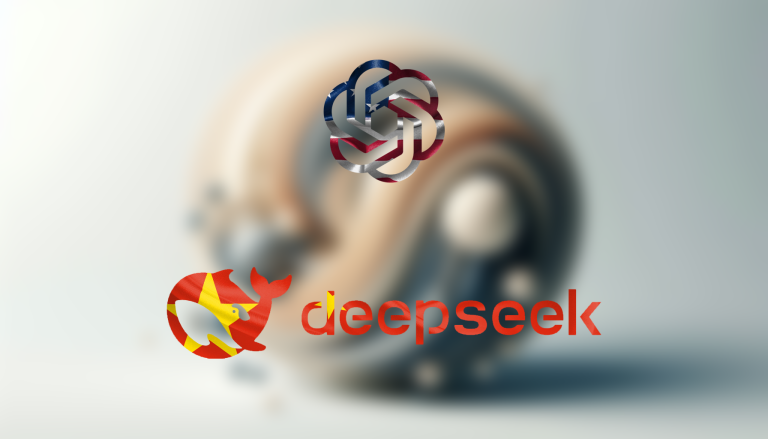Imagine having a virtual assistant eager to help, but it keeps misunderstanding your requests. Frustrating, right? That’s how using AI tools like DeepSeek can feel if you don’t know how to communicate effectively. The truth is, AI isn’t magic—it’s a tool. And just like any tool, you’ll get better results when you use it the right way.
In this guide, we’ll show you how to unlock DeepSeek’s full potential by crafting precise prompts for coding, writing, problem-solving, and more. No tech jargon, no guesswork—just actionable tips and ready-to-use templates. Whether you’re a developer, writer, entrepreneur, or student, these strategies will save you time and improve your outcomes. Let’s dive in!
Why DeepSeek Stands Out: A Quick Comparison with ChatGPT
Before we get into the nitty-gritty of crafting prompts, let’s address a common question: DeepSeek vs ChatGPT—what’s the difference?
While both are advanced AI models, they cater to slightly different needs:
- DeepSeek excels in specialized tasks like coding, technical problem-solving, and structured workflows. It’s ideal for users who need precision and adaptability.
- ChatGPT , on the other hand, is a versatile all-rounder, excelling in conversational AI, creative writing, and general-purpose tasks.
The key takeaway? If you’re looking for a tool tailored to specific workflows, DeepSeek might be your best bet. But to make the most of it, you need to know how to ask the right questions.
How to Use DeepSeek: Mastering the Art of Prompt Engineering
To get the best results from DeepSeek , you need to think strategically about how you phrase your requests. Here’s how:
1. Be Clear and Specific
Vague questions lead to vague answers. Instead of asking, “Write something about climate change,” try:
- “Explain the impact of deforestation on global warming in 300 words, focusing on scientific data.”
2. Structure Your Prompts
Break down complex tasks into smaller steps. For example:
- “Create an outline for a blog post about renewable energy trends in 2024.”
- “Expand the second point in the outline with statistics and examples.”
3. Experiment with Formats
DeepSeek works well with structured inputs. Try templates like:
- “Generate [number] ideas for [topic], targeting [audience].”
- “Write a [genre] story where [character] faces [challenge].”
4. Test and Refine
Don’t settle for the first output. Run multiple tests by tweaking your prompts. For instance:
- Original Prompt: “Suggest marketing strategies for a new app.”
- Refined Prompt: “Suggest 5 low-cost marketing strategies for a fitness app targeting millennials.”
This iterative process helps you understand what works best for your needs.
DeepSeek Prompts for Every Task
Here’s a curated list of DeepSeek prompts tailored to different scenarios. Replace placeholders with your specifics and watch the magic happen!
Writing & Content Creation
- Blogs/Articles :
- “Brainstorm 5 platform-specific content ideas about [topic], including hooks, themes, and audience targeting tips.”
- “Write a step-by-step guide for [task] using [tool/technology]. Target audience: [beginners/experts]. Include troubleshooting tips.”
- Social Media :
- “Create a [platform] post about [topic] in [tone]. Use [hashtags/emojis] and keywords: [keyword1, keyword2].”
- “Suggest 3 interactive [platform] post ideas (polls, Q&A) about [topic] to increase engagement with [audience].”
- Editing :
- “Rewrite this text using simpler vocabulary and shorter sentences: [paste your text here].”
- “Rewrite this text for [SEO/clarity]: [paste text]. Keep it under [word count] and emphasize [key point].”
Creative Writing
- “Write a [genre] story where [character] must [goal]. Include a twist involving [object/event].”
- “Describe a [genre] protagonist’s backstory, motivations, and flaws. Include a secret tied to [theme].”
Video Scripts
- “Draft a [type] video script for [product]. Structure: Hook (X sec), Problem (Y sec), Solution (Z sec).”
- “Write a customer testimonial script for [product]. Focus on [pain point] and how [feature] solved it.”
Technical Reports
- “Summarize findings from [data/experiment] into a report. Highlight [key metrics] and recommendations.”
- “Condense this technical report into a 1-page executive summary for [stakeholders]. Highlight [metric1] and [metric2].”
DeepSeek Test: How to Evaluate Its Performance
Testing DeepSeek is crucial to ensure it meets your expectations. Here’s how to conduct a thorough evaluation:
- Define Your Goals : What tasks do you want DeepSeek to handle? Coding? Writing? Problem-solving?
- Run Sample Prompts : Use the templates provided above to test its outputs.
- Compare Results : Compare DeepSeek’s performance with other models like ChatGPT to see which one aligns better with your needs.
- Iterate and Improve : Refine your prompts based on the results to achieve optimal outcomes.
DeepSeek Prompts: Ready-to-Use Templates
Here are some plug-and-play DeepSeek prompts across various categories:
Coding & Development
- “Implement a [language] function that handles [task] with inputs: [input variables]. Include error handling for [edge case].”
- “Write a [language] script to automate [task] using [library/framework]. Ensure compatibility with [OS/version].”
Problem Solving & Analysis
- “Compare [Technology A] and [Technology B] for [use case]. List pros/cons in a table and recommend the best for [scenario].”
- “Analyze [Option A] vs. [Option B] for [goal]. Score risks, costs, and long-term impacts from 1-10.”
Learning & Education
- “Explain [concept/subject] in simple terms, focusing on [specific aspect] and include real-world examples.”
- “Generate [number] practice problems for [topic], sorted by difficulty. Include answer keys with explanations for common mistakes.”
Business & Strategy
- “Draft a [platform] campaign for [product] targeting [audience]. Include [number] hooks and a CTA for [KPI].”
- “Perform a SWOT analysis for [business/idea] in [industry]. Prioritize top opportunities and threats related to [trend].”
Final Thoughts: Mastering DeepSeek Prompts
Mastering DeepSeek isn’t about memorizing commands—it’s about clarity. With the prompts and strategies outlined above, you’re not just asking better questions; you’re training the AI to think like you. Start small, experiment, and refine your approach. Soon, you’ll wonder how you ever worked without it.
Remember, AI is only as smart as the prompts you give it. Now that you’ve got the cheat codes, go make DeepSeek your most reliable collaborator. And hey, if you discover a killer prompt, share it with the rest of us—let’s build this together!



